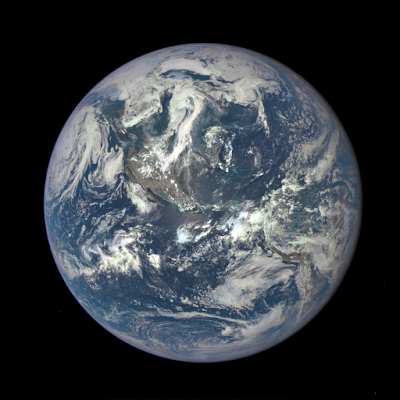One morning, not many weeks ago, a postcard floated gently through my letter box, onto my doormat, and brought a smile to my face. For we all know that I love me a postcard. This specimen—sent by two friends/colleagues (the indomitable duo Paul Byrne and Christian Klimczak)—was especially exciting, however, because it could almost have come from the Moon. And we all know that I love me some Moon.
And at first glance (if you ignore the clouds in the very Earthly blue sky), the landscape does look vaguely lunar. We can compare and contrast:
 |
| Lunar landscape, captured during the Apollo 17 mission. Credit: NASA |
But, alas, my postcard does actually have a terrestrial origin. Rather than bearing a lunar postmark, it was sent from the Craters of the Moon National Monument and Preserve in Idaho, where my friends were carrying out fieldwork. The protected region is volcanic in nature and a presents a well-preserved example of flood basalts (another example of flood basalts—the extensive Siberian Traps—featured in one of my early postcards). The site encompasses three major lava fields (about 1000 km2 in area) that include a huge variety of basalts (in terms of composition) and excellent examples of many different volcanic features (such as lava tubes and scoria cones).
When I asked Paul why he and Christian chose this site for their fieldwork, he replied that it includes "some neat interactions between volcanic and tectonic structures (e.g., scoria cones riven by fissures, fractures, and a rift zone). Mainly we went to see what these features look like and how they might compare with similar landforms on Mars." In particular, he noted that they found "a bunch of pit craters" that look very similar to those we see on Mars. As planetary geologists, Paul and Christian are thus interested in studying the terrestrial Craters of the Moon region as a planetary analogue, i.e., to gain better insight into the similar-looking features on Mars and elsewhere.
A pit crater, like a sinkhole, is a depression that forms via the collapse of a surface overlying an empty chamber. Unlike impact craters that have raised rims and sloped walls, pit craters have steep/almost vertical walls. In planetary imagery they thus appear as dark, approximately circular, shadowed holes, and their floors can only be seen when the Sun is at a high angle of illumination. One way that a pit crater may form—especially in volcanic environments—is through the collapse of a lava tube (which is essentially a tunnel formed by lava flowing underground). This process may begin with the buckling of the tube's roof at a location where the roof is thinnest. These craters are often known as 'skylights' because light can flood through them into the darkness of the connected cave.
In 2007, such skylights were discovered on Mars. Scientists looking at the pictures form NASA's Mars Odyssey and Mars Global Surveyor satellites were puzzled by the very dark, circular features. By combining the images with thermal information from Mars Odyssey's infrared camera, however, they concluded these pits were indeed windows into underground caves. Soon after, in 2009, the first lunar skylight discovery was made by a team working on high-resolution images returned from the Japan Aerospace Exploration Agency's SELENE satellite.
These skylight discoveries have got many in the planetary science community quite excited. It is thought that the subsurface structures they provide a window into, could provide a potentially habitable environment. On Mars, organisms could have perhaps flourished under the protection of the ancient lava tubes (i.e., acting as a shield against harmful ultraviolet radiation). Moreover, if the lava tubes are structurally stable at a large enough size, they could be suitable as shelters for human explorers. Indeed, the maximum potential diameter of lunar lava tubes has been estimated by yet another friend/colleague of mine. While a PhD student at Purdue University, David Blair led a study in which he calculated the stresses and strains that would be present around lunar lava tubes. Given the size of the lava tubes inferred from NASA's GRAIL gravity data (i.e., with diameters of more than 1 km), the team estimated that the structures could remain stable even at widths of more than 1.6 km.
If Dave and his team are right, these lava tunnels may one day present a useful extraterrestrial habitat for humans—big enough to house sizable settlements. When living here on Earth is no longer feasible, perhaps we will decamp as a race to the lunar lava tubes where we will shelter from the bombardment of radiation and escape temperature extremes. I think we can therefore justify sending a piece of (basaltic) rock from the Craters of the Moon for this Postcard From Planet Earth. As a terrestrial analogue for these potentially habitable extraterrestrial settings, it can be our message to the alien planetary geologists when they arrive for their inevitable visit: 'if we're not in, try elsewhere'.































